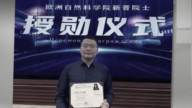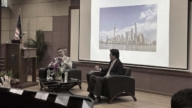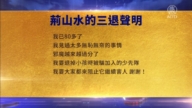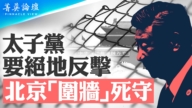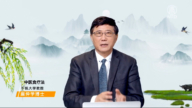【新唐人2014年02月19日訊】2013年中國公共財政收入達到12萬9000億,人均宏觀稅負接近萬元。不少人聽到這樣的數據都感到恐慌。以官方公布的數據來計算,2012年城鎮居民人均可支配收入24565元,農村居民人均純收入7917元,也就是民眾的收入有將近一半是貢獻給政府了。對此,中共財政部的官員說,還是太少了。
根據「中國社會科學院財經戰略研究院」發佈報告顯示,2013年中國公共財政收入達到12萬9000億,人均宏觀稅負接近萬元。
稅負是稅收負擔的簡稱,有宏觀和微觀之分。「宏觀稅負」是從政府角度看稅收負擔,指的是一個國家或地區在一定時期內的稅收總額,佔同期國內生產總值(GDP)的比例。而「微觀稅負」是指企業或個人納稅和收入的比率。
中國政法大學財稅法研究中心主任施正文:「這個收入佔GDP的18%左右,這個小口徑的稅負收入,稅負的比重從國際上來看應該是不高,發達國家應該是30、40%。」
高稅國家,比如瑞典,稅收佔GDP的51%,比如美國,稅收佔GDP的27%。而中國的稅收只佔GDP的18%左右。
但是,在瑞典,孩子上學不交一分錢,因為大家都繳了稅。丹麥也是個高稅率國家,稅收佔到收入的50%-70%。但政府包攬了所有國民的醫療和教育費用。在美國,大學前教育的公立學校學費都是免費的。
施正文:「中國畢竟現在還不是一個開發國家,GDP發展指數還是維持是中等水平,財政的管理水平也不是很高,那麼按照這樣的情況來看,應該說我們的稅負是有點偏高。」
「公共財政收入」是衡量「宏觀稅負」各指標中,口徑最小的一個,還不包括數不清的各種費,中共的稅務部門也從來沒有給出過具體解釋。
大陸博客作家蔡慎坤的文章寫到,中國稅制與國外稅制的一個重大區別,就是政府的財政收入除稅收之外,還有包括預算內收費、預算外收入、制度外收入等等。把這些收入統統加起來與GDP相比較,才是真正的「宏觀稅負」。如果再把制度「之外」的亂收費、亂罰款、亂攤派,還有形形色色的腐敗賄賂支出,以及因通貨膨脹而提高的實際稅率,那就根本算不清楚稅負水準到底是多少了。
他認為,全民「高稅負」換來的只是「低福利」甚至是「無福利」,「取之於民」的稅收,只用於少數人揮霍,乃至被各種豆腐渣工程所吞噬,那才是全民的悲哀!
大陸金融投資顧問鄭先生:「這個設計統計的方法和角度不一樣,不同的統計機構,他統計出來的數據是不同的,政府要做的事情,只是在迴避和淡化,甚至是掩飾,但客觀就是這樣,就產生資本外流,產生那些有錢人沒有安全感。」
報告的資料顯示,中國九成以上的稅收來自企業繳納。中國大量民營企業家抱怨稅高、負擔重,為了尋求資金上更健全的制度、為了自身的安全感與子女的教育,他們選擇投資移民海外。
鄭先生:「如果民眾的負擔過大的話,他沒有錢,不能藏賦予民,那麼市場的消費如何振興、市場如何繁榮?我們的稅收,我們的錢怎麼花?一直缺乏監管和透明,怎麼樣建立一種制度化的監管和約束機制,這才是我們應該要著手。」
根據美國《福布斯》雜誌推出的「稅負痛苦指數」排名,中國大陸位居全球第二。事實上,早在春秋時代,著名思想家管仲就提出警告,「取於民有度,用之有止,國雖小必安﹔取於民無度,用之不止,國雖大必危」。
事實上,繳稅多寡不是讓人痛苦的主要原因,關鍵是稅收是否公平?稅收收入用在何方?到底有多少是用在人民身上?或許這才是「稅負痛苦指數」高居不下的關鍵所在。
採訪/常春 編輯/黃億美 後製/郭敬
Communist Officials Say Chinese Tax Burden Is too Little
In 2013, China collected public revenue of 12.9 billion, and on
a per capita basis, the macro-tax burden is calculated at nearly
10,000 yuan.
This figure shocked many.
The official data suggested that, at the 24,565 yuan disposable
income of urban residents and 7,917 yuan of rural residents
in 2012, half of the income was contributed to the government.
The Communist Treasury officials claimed, it’s still too little.
National Academy of Economic Strategy, Chinese Academy
of Social Sciences (CASS), reported recently that,
the 2013 total revenue of 12.9 billion suggested a macro-tax
burden of nearly 10,000 yuan for the Chinese.
There are macro and micro factors when it comes to the tax
burden.
The macro-tax burden refers to the ratio of revenue raised by
the entire country or region in a given period to the GDP,
whereas the micro-tax burden refers to the ratio of an industry
or personal tax to the gross income.
Shi Zhengwen, Professor in the School of Civil, Commercial,
and Economic Laws, China University of Political Science
and Law:
“This revenue is accounted for about 18% GDP, which is
relatively low comparing to the international community.
The developed countries should be around 30% to 40 %."
In high-tax countries such as Sweden, revenues from taxes
are accounted for 51% GDP.
The tax revenue in the United States is accounted for 27% GDP.
China’s tax revenue is only about 18% GDP.
However, in Sweden, the children go to school for free.
Denmark is also a high-tax country. The taxes are accounted
for 50 % to 70 % of the GDP.
However, the government also covers the health care and
education costs.
In the U.S., the free public schools provide basic school supplies,
after-school program and free lunch to the majority of students.
The ambulance is also free.
Shi Zhengwen: “China, after all, is not a developed country.
According to its moderate GDP and the far from sufficient
financial management, the tax burden is a little too high."
In China, the public revenue is the smallest caliber measure
index of the macro-tax burden.
The Communist tax department has never explained in
concrete details of all measurement indices .
The Chinese blog writer, Cai Shenkun, wrote that a significant
tax difference between China and other countries is that,
other than tax revenue, there is also revenue from governmental
budget fees and charges outside the budget, in China’s system.
The total of these in comparison to the GDP is the real macro-tax
burden.
Considering the chaotic charges outside the system, such as fines
and expenses on all kinds of corruptions and bribery,
as well as the high taxes due to inflation, the tax burden is hard
to calculate.
He believes that in return for the high tax burden is the low
welfare or even no welfare.
The taxes collected from the people are only usable by the few
or even swallowed by various shabby constructions.
It is the sorrow of all of China.
Mr. Cheng, a finance consultant in China: “Given the different
statistical methods and approaches, the data will be different.
What the government is doing is actually to devoid, simplify,
or even cover up.
In reality, it leads to capital outflows and lack of security for
the wealthy class."
The CASS report showed that more than 90% of China’s tax
revenue came from corporate tax.
The majority of Chinese private entrepreneurs complain about
heavy taxes, and choose business emigration for a better financial
system, security and education.
Mr. Cheng: “How can the market revitalize if people are
burdened with heavy taxes?
It lacks supervision and transparency about how our taxes
have been utilized.
What we need is to build a systematic supervision and restraint
and how to build it."
According to Forbes Tax Misery Index, China ranks second
in the world.
In fact, as early as the Spring and Autumn Period in
Chinese history, the famous thinker Guan Zhong had warned,
“Take from the people with constraint, and use it with a purpose,
the state will be safe, though small;
take excessively from the people, and use it without restriction,
the state is at risk, though great."
In fact, the amount of taxes is not the key to the misery.
The key is that if the tax is fair, where it’s used, and how much
it’s used on the people.
Perhaps these are the causes of why China’s tax misery index
has been so high for years.
Interview/ChangChun Edit/HuangYimei Post-Production/GuoJing


